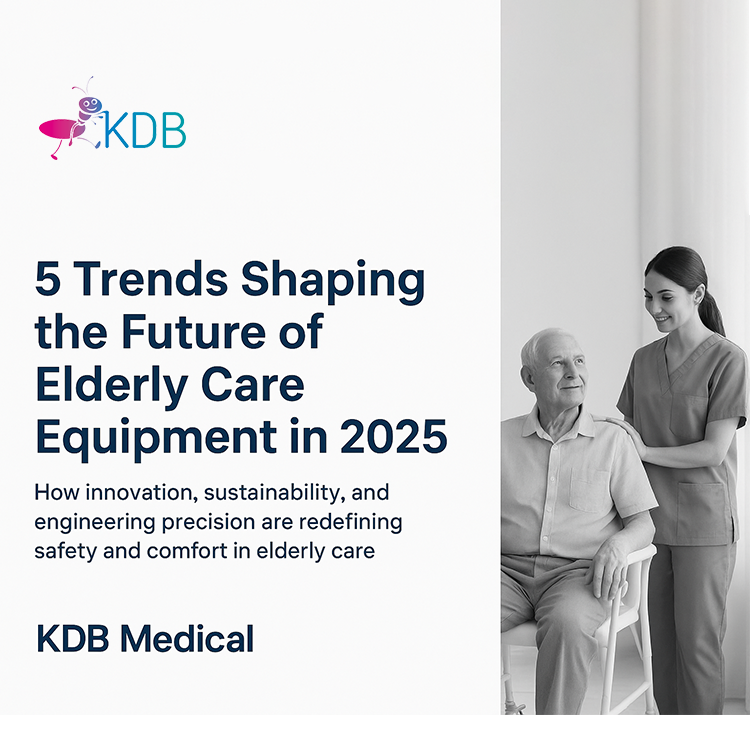The global elderly care equipment industry is entering a new era of innovation. With populations aging rapidly and healthcare standards rising, hospitals, nursing homes, and rehabilitation centers are demanding solutions that are safer, smarter, and more sustainable.
At KDB Medical, we closely monitor these shifts to design products that not only meet functional needs but also anticipate the next wave of healthcare transformation.
1. Smarter Designs for Personalized Comfort
Comfort is no longer a secondary concern — it’s a core design priority.
Manufacturers are increasingly integrating ergonomic features, adjustable components, and user-centric design to accommodate diverse body types and mobility levels.
Shower chairs, for instance, now feature 360° swivel seats, padded surfaces, and non-slip frames to ensure both comfort and safety during use.
2. Sustainable and Recyclable Materials
Eco-friendly production is shaping the future of healthcare manufacturing.
In 2025, more facilities are adopting aluminum alloy frames, EVA cushions, and recyclable PP plastics to minimize waste without sacrificing strength or hygiene.
This shift reflects a global commitment to environmental responsibility — an area where KDB Medical continues to innovate through sustainable material sourcing and modular product designs.
3. Integration of Smart Technology
IoT and digital sensors are entering the elderly care space.
Smart commode chairs and shower seats can now monitor user posture, humidity, or even usage frequency, helping caregivers track health data remotely.
These advancements not only reduce the workload for healthcare staff but also enhance patient independence — a crucial goal for modern elderly care.
4. Enhanced Safety Standards and Certifications
As global regulations tighten, hospitals and nursing facilities are prioritizing equipment that meets international safety standards such as CE, ISO, and FDA certifications.
This has driven suppliers to focus on anti-slip structures, corrosion-resistant coatings, and load-tested stability to ensure long-term reliability.
5. Customization for Institutional Needs
B2B buyers now expect customization — from seat height adjustments to branded finishes.
Manufacturers like KDB Medical are responding by offering modular configurations that fit various clinical environments, whether it’s a compact nursing home bathroom or a large rehabilitation center.
Conclusion
The elderly care equipment industry is evolving fast — blending comfort, sustainability, safety, and intelligence.
KDB remains at the forefront of this transformation, continuously developing products that empower caregivers and enhance patient well-being.
In 2025 and beyond, innovation in elderly care isn’t just about function — it’s about improving quality of life through thoughtful engineering.

